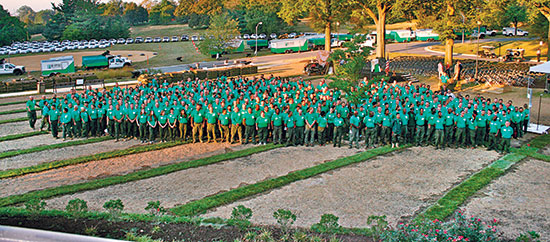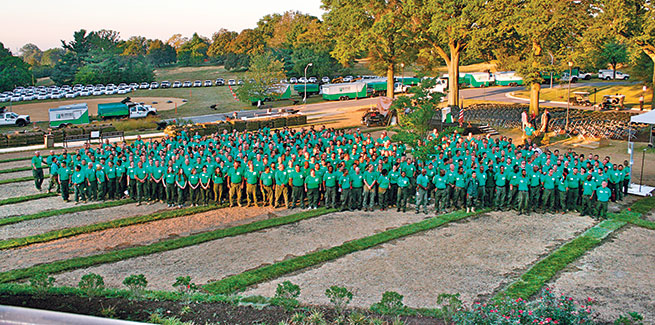
You grew about 12 percent last year. Is that typical?
That’s pretty standard for us, in the 10 percent to 15 percent range. Over the history of the company, that’s what we target, and we’ve usually been successful at it. We mainly target that range to provide opportunity for employees.
Talk about your renewed focus on evaluations.
Everybody has some kind of review or evaluation process. I don’t know that structurally ours is much different, but I’ll tell you what makes ours special, at least what we push for, is very direct conversations. Getting people comfortable with being able to self assess, being able to take criticism, making sure that criticism is delivered with one goal in mind, and that’s to make each person better.
When you’re hired, you’re given an evaluation at 30 days, seven months, one-year, a year and a half and two years. After two years, it’s annually.
A write-up is done prior to sitting down with your manager. There will be feedback from other employees, like a 360-degree review, including peers, people who work for you and people above you. That’s to try to have each employee accountable for supporting up and down the ladder. We review compensation at that time, too, and it’s done very individually.
Obviously, we have a system around setting goals and measurements around those goals. But an environment that follows through with open communication both ways—from the employee to their boss and vice versa—I’d say makes us a little different then most.
How do you foster that sense of direct communication?
No. 1, you have to have a culture and an environment that allows feedback to go in every direction almost all the time. Ours comes from our founder, Craig Ruppert, and his approach toward people and the business. He’s always asking questions and he always wants to hear what people have to say—good or bad.
I think people feel comfortable sharing both the good and bad if the company has a track record of not overreacting, being supportive and trying to correct and fix, instead of a culture where people feeling like they’re going to get in trouble for saying the wrong thing.
Every year we have a thing called management development day where we train all of our managers for two days. We have 1,200 employees, and about 500 come to that event.
A favorite topic that somebody speaks on every year is “how to have a tough conversation.” There are techniques for talking to people, but it also just has to come from a sincere place. I think if that person knows you want to help them, the message is received better. We make sure there are not superficial reviews. We get into the meat and hopefully move forward.
What’s your process if someone is not meeting the standard?
I would say our culture manages that more than anything, meaning we don’t have a bunch of specific rules around that.
We hire somebody, and in our handbook we say, “Our intention is for this to be your last job. We hope to hire you for the rest of your career.” That’s our commitment to them. It’s a mindset we start with, and I think it helps us to think about employees as a long-term commitment, not as someone who’s late too many days in a row. What’s really going on in that guy’s life? Why is he late? This isn’t easy work. You’ve got to be a pretty committed person to do it. Maybe something else was going wrong that we can help him with.
 Phil Key
Phil Key
President
Ruppert Landscape, Laytonsville, Md.
No. 11
Photo: Ruppert Landscape


